Pakistan, like most developing nations, is locked in a paradox. In theory at least, innovation driven by robust research and development could be the key to breaking it out of a vicious debt and deficit-ridden cycle.
Indeed, economists the world over constantly exhort third world governments to spend more on R&D in order to cure their flagging economies. As emerging technologies like artificial intelligence and 3D printing usher in what many see as the Fourth Industrial Revolution, that investment could be the difference between market leaders and losers of the future.
Yet, preoccupied as they are with seemingly more ‘pressing’ challenges, developing countries have far less resources and capability to invest in R&D. In Pakistan in particular, many experts now sound jaded and hoarse when the topic is even broached.
Take the agriculture sector. In 2021 most farmers still rely on legacy techniques. And in the face of ever-increasing threats from climate change, the produce they cultivate is still grown from seed varieties developed decades ago.
To quote just one example, Pakistan’s kinnow, which counts itself among the country’s top exports, has been struggling with both viral diseases and pest infestations for quite some time. Meanwhile, seedless varieties have already hit overseas markets, souring prospects for our local varieties. Pakistan’s inability to adapt and produce new breeds of the fruit are severely hurting the sector.
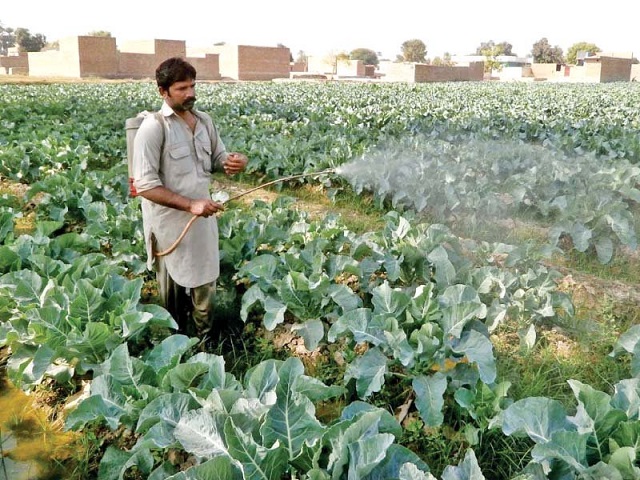
PHOTO: AGENCIES
Lagging behind
According to the UNESCO Institute for Statistics (UIS), Pakistan’s gross domestic expenditure on R&D was 0.24% of GDP in 2017, a level that has remained unchanged since 2015. In contrast, its neighbours to the east and west have been able to dedicate a far greater share to R&D, with India spending 0.7% of its GDP and Iran spending 0.8% in 2017.
Shedding light on this predicament, All Pakistan Fruit and Vegetable Exporters, Importers and Merchants Association (PFVA) Patron-in-Chief Waheed Ahmed lamented that there had been no development in kinnows and no new varieties were being worked on. “For the past 10 years, we have been repeatedly asking research institutes to work on this product and bring in new varieties,” he complained. “We are forced to cultivate the same product that we grew sixty years ago.”
Waheed pointed out that there had been a persistent decline in the quality of kinnow over the years. “But still, there has been no focus on research and our pleas seem to be falling on deaf ears. No attention has been paid to R&D over the past decade and a half, and it is only a matter of time before the sector faces disaster,” he said.
Sindh Abadgar Board (SAB) Vice President Mahmood Nawaz Shah echoed the views of the PPVA patron-in-chief, stressing that R&D was integral to each stage of agriculture. “From production to post-harvesting and later packaging, it is a necessary requirement, he said. “It is even required for seed development, but unfortunately there is a general weakness in every area.”
According to Shah, apart from wheat, Pakistan does not have any seeds of its own for its major commodities. “We have local seeds for wheat that were launched a while ago and we have some in the pipeline as well. But not so for other major crops like sugar, cotton, rice and maize,” he noted. “We import 99% of the seeds for these crops.”
Lack of R&D and innovation has led to a dire situation for Pakistani agriculture, the SAB official said. “The sector has to bear 30% to 35% losses in pre and post-harvest stages because there is no awareness how to best handle produce and what technology to use. We simply have no research on the subject,” he bemoaned.
“Take any agricultural product in Pakistan today, production costs are too high and yields are too low,” Waheed pointed out. Building on this, Shah said, “If Pakistan’s production per acre is 4.5 tons, the world is yielding 15 tons from the same one acre.”
Seed varieties are not the only thing hold our agricultural exports back. Inadequate and out-dated processing technology and practices have also kept Pakistani products uncompetitive in the international market. For instance, despite being a top 10 producer of dates, Pakistan has only been able to export an insignificant amount.
“In Ramazan, most people consume imported dates, not because ours are not good but because there is no pre-harvest or post-harvest treatment. As a result, 80-90% of the produce is in dried form, which is the lowest form of dates in terms of quality,” Waheed said. He said Pakistan could earn significantly more if it moved on to another variety and consequently away from dried dates.
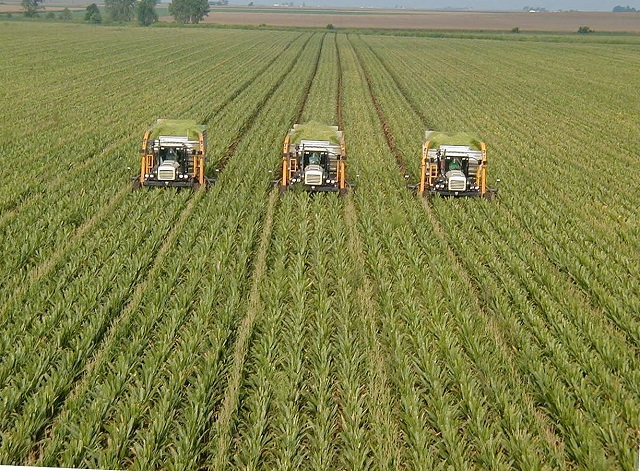
PHOTO: AGENCIES
Implementation woes
Experts working in Pakistan’s research institutes and related disciplines say that is only one half of the story. According to them, the issue is not as much about a dearth of research as it is about other factors.
Sustainable Development Policy Institute (SDPI) Executive Director Abid Qaiyum Suleri said he did not agree with the statement that there was no focus on research in the country. “I think there is a lot being done as far as research is concerned in public sector research organisations. The real issue is scaling up the research in an economically feasible manner.”
He highlighted that three major universities in Punjab are presently engaged in various research activities. Not only that, the Pakistan Agriculture Research Council (PARC) – an initiative of the Ministry of National Food Security and Research – is working in this regard as well. “There are also research wings of different provincial agriculture set ups so assuming that they are doing nothing would be wrong,” he added.
Shedding some light on the findings of these institutes, Suleri said that they have produced varieties of wheat seeds, vegetables and fruits, in addition to doing work on precision agriculture and water management among other things. “The thing is, once research is conducted, it has to be disseminated in the field in a manner that is timely and economically viable,” he pointed out. “So that is where we are perhaps lacking in Pakistan. In scaling research up and promoting its adoption by stakeholders.”
The PFVA chief, when asked about this, did concede that the Nawaz Sharif Agriculture University in Multan was engaged in some research on mangos. He argued, however, that those efforts were still at an early stage, and that R&D in general was not progressing at a desired pace in Pakistan.
“The only [research] work being done is in Faisalabad and Multan,” Waheed said. “There are institutes … [but] there is no interest as these have not developed anything in the past.”
SAB VP Shah too acknowledged the presence of research institutes for onion, banana, rice and horticulture. “The infrastructure is present but unfortunately, we are not taking advantage of these facilities,” he added.
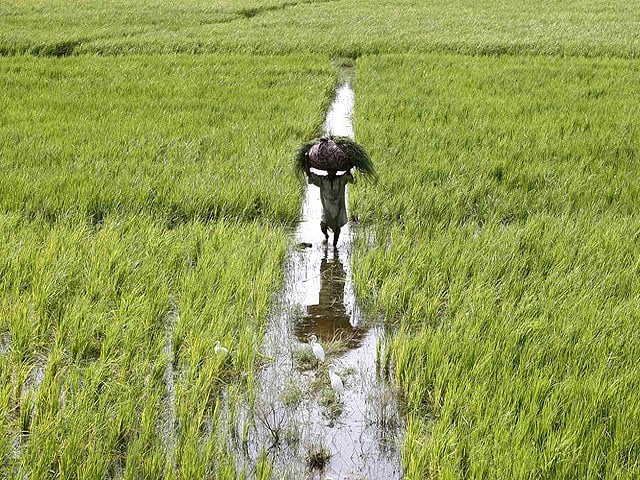
PHOTO: AGENCIES
No coherent vision
Talking about hurdles, Suleri said that having a uniform research agenda is another lacuna. He said that there should be an annual research plan for agriculture so there is no duplicating of efforts. He added that these hurdles need to be addressed but the statement that there is no research in agriculture is a slight misconception.
Some also claim that progress has been further hindered by a lack of experts and poor ties between academia and industry. The PFVA chief shared that when the prime minister had first visited China, the associations had urged the government to involve the Chinese academia with our R&D department. This would help Pakistani researchers learn from their Chinese counterparts and bring the expertise back to their home country. “However, the problem is that we do not involve the academia when actually they are the one who are involved in the research.”
Shah shared similar sentiments as he lamented, “We do not have professions here as the expertise in Pakistan has decayed over the period of time.” He shared that while working with the World Bank on onions, they had asked the global lender for international experts.
“I can very easily say that for most of the things we do not have the relevant expertise. In the past five years, a lot of PhDs have come from China but we haven’t utilised them.”
When questioned why we were lagging behind, the answer were the typical ailments that plagues most sectors of the country. “There is incompetency, unwillingness to work, nepotism, and corruption. All these are reasons everywhere for no development,” Shah remarked.
However, Suleri said, “We are not lacking in research capacity. We have the capacity both at federal and provincial government departments even in the private sector there are agrochemical companies, fertiliser industry and dairy industry.”
“The issue is lack of research funding. If funding is available then the second thing that is lacking is whether they are able to scale up and replicate the research in the field in a commercially feasible manner.”
“If the research institutes are not able to do that because of lack of funds or lack of coordination with adaptation and external departments or due to other policy issues that should be probed further,” he added.
He said that the government needed to come up with an agriculture framework or food security plan. “Agriculture is not under the mandate of the federal government, but even then it can certainly come up with a food security plan; within which there can be components of research, development and adaptation.”
Suleri also stressed that all agriculture universities and research organisations needed to work on a coherent and integrated research agenda. “Once the research agenda is aligned, the work needs to be replicated and scaled up.”
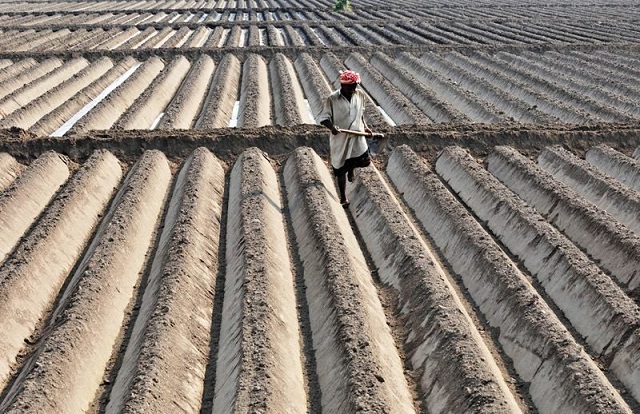
PHOTO: AGENCIES
History of neglect
One reason that some experts use to explain poor investment in R&D is that it does not always yield positive results. Stakeholders, however, say that some positive signs should be evident if the little amount of research that is being done has some quality.
“Yes, the quantum of money that goes into R&D in Pakistan is significantly less proportion-wise than other regional nations. But even limited research should produce results,” said Shah. He also urged the government to play a more robust role. “So far, the little development that we have seen has been due to intervention by experts from other countries, like the US and Australia.”
Speaking on condition of anonymity, a government official did admit that Pakistan’s officialdom had a history of negligence towards R&D. “A lot of institutes, both public and private, and the Ministry of National Food Security and Research are working on research projects for agriculture,” he pointed out. “But yes, all our efforts have so far not yielded the volume of work that we need. It is true that the country’s focus on R&D is the lowest in the region.”
Elaborating further, he said that there were a lot of reasons for the low priority given to R&D. Mainly though it was so because past governments never prioritised this sector. “Everyone talks about it but agriculture is never a focus for them.”
Additionally, a lack of funds is also another hindrance why research and development has not progressed as it should have. “The research institutes are not given the proper funds.”

PHOTO: AGENCIES
Some hopeful signs
There are some signs that Pakistan’s R&D predicament may not be as hopeless as some stakeholders feel. Recent developments suggest that the country’s top authorities are taking note of the role research and innovation can play in mitigating threats lingering over the horizon.
The State Bank of Pakistan, in its First Quarterly Report 2020-21, noted “While heavy rains played an outsized role in depressing the cotton yields during Kharif FY21, the yields have been erratic over the past decade on the whole.” It added that the primary reason for this could be traced to gaps in cottonseed quality, which leave the crop susceptible to weather-induced damages and attacks by pests like the pink bollworm and whitefly. “Thus, research and development of high-yielding varieties of cotton seed, along with improved availability of certified cotton seeds, needs priority focus,” the report advised.
The past year also exposed weaknesses in our agriculture system as the country dealt with shortages of wheat and sugar. Though the situation was overcome by importing the commodities, threats to the nation’s food security hang over the country’s future like the sword of Damocles.
In this regard, University of Agriculture Faisalabad (UAF) PRO Ahmad Shehryaar shared that major work is being done in terms of training farmers and informing them about latest techniques. He said that these methods were also being implemented in the field, and it was noted that following the training, other farmers also picked up on the new techniques.
He further shared that the UAF developed a new variety of brassica – a genus of plants in the cabbage family – that had better yield and higher seed oil content. He said that work was also being done on quinoa and cotton varieties.
PFVA chief Waheed stressed that with research, all our agricultural exports can be increased from the current level of $730 million to $1 billion in two years, then $2.5 billion in five years and $6 billion in 10 years. “Today our total production of fruits and vegetables is 15 million metric tons and this can be increased to 30 million metric tons if we produce new seeds that can adapt to climate change and modern practices.”
Citing the potential benefits of research and development on the overall sector, the SAB VP Shah said, “We can increase yields, improve water consumption and by utilising the water we save we can improve our production.” He said that Pakistan did not export more than 5% of its horticulture products but we can boost that number if we focus more on R&D in the post-harvest stage. “Even with low yields we have surplus, the possibilities are promising if R&D is focused.”
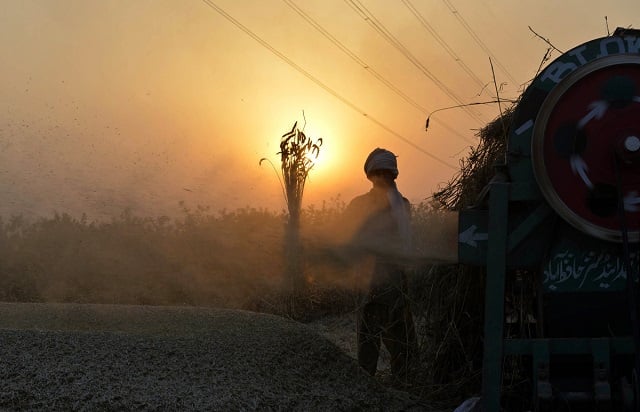
PHOTO: AGENCIES
